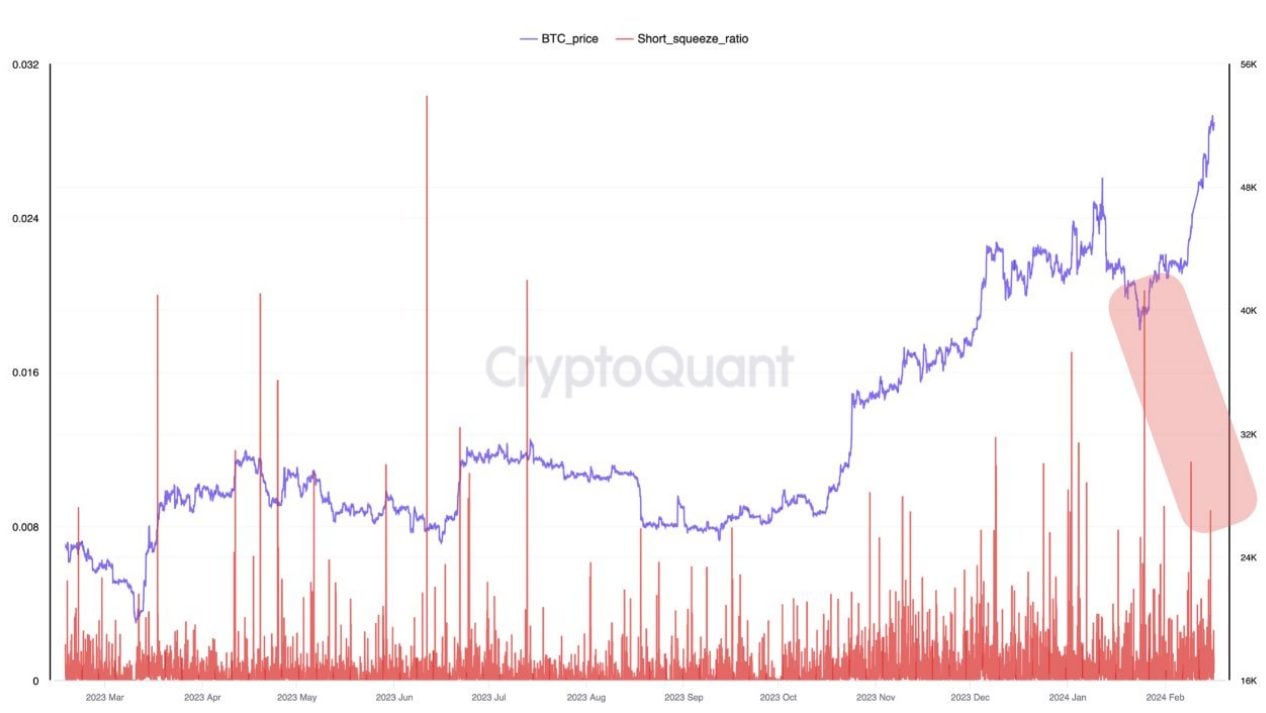Whale investors believe in more upside for Bitcoin: Bitfinex
After reaching a new yearly peak on Feb. 20, Bitcoin corrected 2%, but investors with deep pockets are not comfortable betting against the asset.

Share this article
The short squeeze ratio in Bitcoin (BTC) contracts is lower this year compared to previous years, as the “Bitfinex Alpha 92” report points out. According to Bitfinex’s analysts, this could be related to ‘whales’ believing in a more substantial rally for BTC, and to a pivot towards direct investments in Bitcoin, bypassing derivative markets.
A short squeeze happens when an asset price rises sharply and forces short investors to buy more and avoid significant losses. The report suggests that this shift in behavior favors direct investment in BTC rather than speculative short selling.

Bitcoin has reached a new peak for the year, touching $52,700 on Feb. 20, marking a 25% increase since January and a 207% rise from its November 2022 lows. This recent surge places Bitcoin almost 29% below its highest-ever value, amidst a backdrop of growing demand and constricted supply.
The crypto’s performance comes in the face of rising inflation, as indicated by recent Consumer Price Index (CPI) and Producer Price Index (PPI) reports, and continued investments into Bitcoin spot Exchange-Traded Funds (ETFs). Analysts note that the market’s resilience may be partially attributed to these factors, challenging earlier market predictions.
Further analysis into Bitcoin’s supply distribution indicates a bullish sentiment among holders. Currently, only 11% of Bitcoin’s total supply is held at a loss, with a mere 6% of long-term holders in deficit. Such distribution patterns historically signal the onset of a bull market phase.
The broader economic landscape, characterized by persistent inflation and reduced consumer spending, has led to adjusted forecasts for potential rate cuts, now postponed to late spring or early summer.
Share this article
